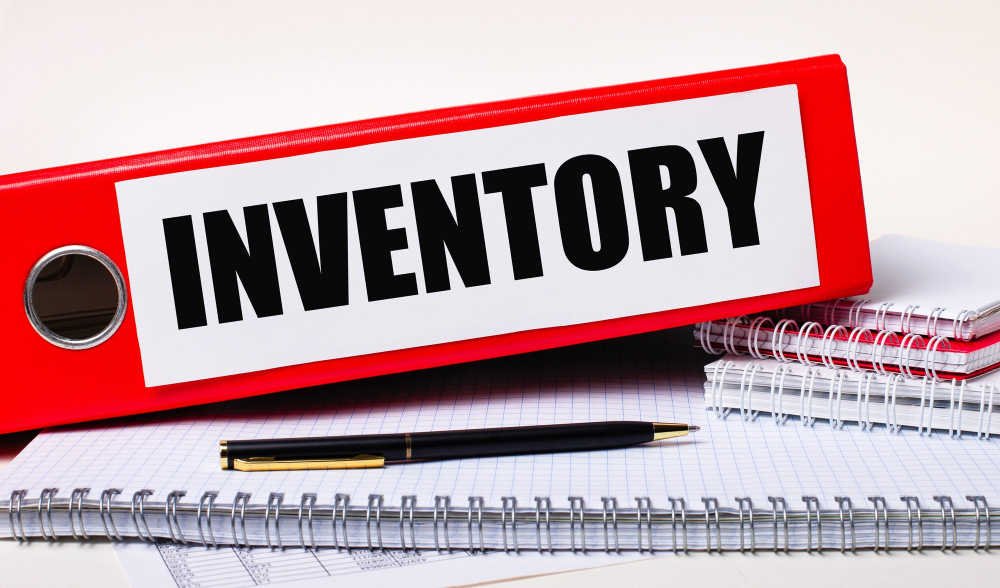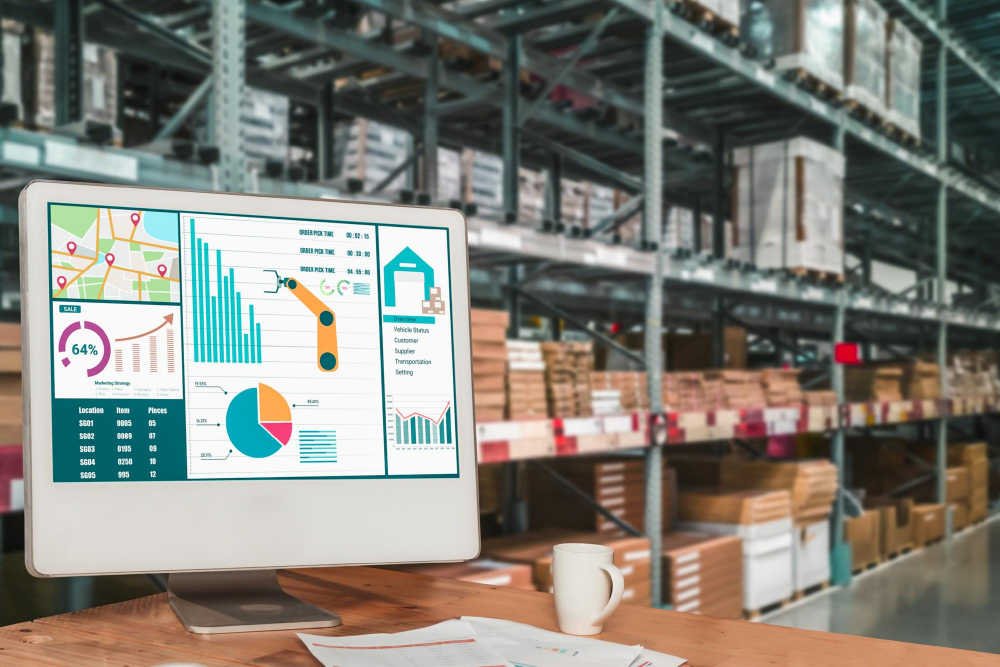Understanding the Difference Between Inventory and Supplies:

Inventory is a category of assets not intended for sale soon. Supplies are used up or obsolete quickly with little or no value after expiration.
Inventory and supplies are two different categories of assets. Inventory is a category of assets not intended for sale soon. At the same time, supplies are used up or obsolete quickly with little or no value after the expiration date.
The Inventory of a company is an essential factor for its success. The company must have enough supply to meet demand, and it is also necessary to have enough extra supplies in emergencies. If they have these supplies, they will be able to keep up with demand, leading to lost sales and lower profits.
What is Inventory?

Inventory is the stock of goods that a company has in its possession. These goods are available for sale and can be used to satisfy customer demand.
The main objective of inventory management is to ensure that there is enough Inventory on hand to meet the needs of customers while not exceeding the company’s budget.
What are Supplies?

Supplies are the materials a company needs to produce its products or provide services. Supplies management manages and controls these materials, ensuring they are available in the right quantities when required.
The supply chain is one of the essential aspects of supply management. It includes all the suppliers and distributors who provide necessary supplies to a company and all their channels for distribution.
How Do You Track Inventory and Supplies?

Inventory and supplies are necessary for any business. They are the lifeblood of a company because they allow a trade to continue and grow. With stock, a company can provide goods and services to its customers. Tracking Inventory is crucial for companies to know when they need more supplies.
There are many different ways that companies track Inventory. Some use spreadsheets or databases, while others use physical systems or software programs.
What are the Different Kinds of Tracking Systems for Inventory Management?
There are many different kinds of tracking systems for inventory management. These include the following:
- Barcode-based trackers: This system uses barcodes to track and manage Inventory. Barcodes have been around for many years and provide reliable tracking of Inventory.
- RFID-based trackers: RFID stands for Radio Frequency Identification, which uses radio waves to identify items in a warehouse or storeroom. These are more expensive than barcode-based trackers but provide the benefit of identifying individual items in a batch or container without having to remove them from their packaging first.
- GPS-based tracking systems: Companies with significant stock holdings can use these devices to know about the location of their precious resources. You can also use them if other techniques fail when an insider trader is suspected.
What are the Costs Associated with Inventory and Supplies?
The cost of Inventory and supplies is one of the highest costs a business must consider. It is challenging to estimate the total cost of Inventory and supplies. Like most other marketing investments, it can take a lot of work to quantify the value of content marketing. However, in this case, there needs to be a more precise insight into the costs and benefits.
Businesses have different types of Inventory, such as raw materials, work in progress (WIP), finished goods, and supplies. Raw materials are usually the most expensive type of Inventory because they have yet to be ready for sale. Collections include stationery items, cleaning products, office furniture, etc.
Some businesses have a fixed cost for each supply type because they buy them in bulk or regularly. Other companies may only buy supplies when needed, which can lead to a higher per-unit cost.
Why is Inventory Management Important for Your Business?
Inventory management is managing the Inventory of goods in a business. It is an essential part of any business that sells goods or provides services.
The most crucial reason for inventory management is to ensure that you have enough stock to meet the demand for your product. If you do not, but the customer wants it, you will be unable to satisfy their needs, resulting in lost revenue. If you overstock, it can result in lost profits and wasted resources.
How to Reduce Costs Associated with Inventory and Supplies through Improved Efficiency?
The world of retail is changing very quickly. Stores are now more than just physical locations. They are an experience where customers can browse, shop, and learn about products they may not have been aware of before visiting the store.
It has led to a new challenge for retailers – how to keep their stores stocked with the right products without dealing with the costs associated with Inventory and supplies.
One way retailers can reduce these costs is by improving efficiency in their supply chain. It will help them keep up with customer demand while reducing inventory and supplies costs.
Differences Between Inventory and Supplies
When keeping track of an organization’s goods, services, and products, the terms “inventory” and “supplies” are often used interchangeably. While these two concepts are closely related, some important differences between inventory and supplies should be considered when managing your business’s resources.
- Duration
Inventory refers to the goods, services, and products that an organization owns or has on hand. These items are intended to be held in stock and used to satisfy customer demand. It means that inventory is typically stored for a more extended period than supplies, commonly used to meet short-term needs.
- Ownership
The organization typically owns inventory, while the supplier typically owns supplies. It means that when an organization purchases inventory, they are responsible for storing, managing, and tracking the items. On the other hand, supplies are typically leased or rented, meaning that the supplier is responsible for keeping track of the items.
- Purpose
The purpose of the inventory is to ensure that customers can always be served, while supplies provide that the organization has the resources it needs to operate. The list typically includes items intended to be sold to customers, while collections typically include things used to help the organization run smoothly.
What is Inventory, and How Does it Differ from Supplies?
Inventory is a term used in the business world to refer to the items that a company has on hand. CSQ comes in handy for any company that handles physical goods. That includes logistics, warehousing, distribution, and transport. You can also use Inventory to refer to the things a company has for sale, such as products or services.
Supplies are materials, tools, and other things needed to produce goods or services. Supplies may include raw materials, components, intermediate products, and packaging materials.
The difference between Inventory and supplies is that Inventory is a product that a business owns and stores, while supplies are items that the company buys.
Inventory is the product that a business owns and stores, while supplies are items the company buys.
Management of the supply chain
Supply management is a process of managing non-inventory items. They save businesses time and money, which is why they are essential. Supply management includes office supplies, cleaning solutions, and more.
Despite being complex in and of itself, supply management typically deals with smaller amounts of material than inventory management and doesn’t interact with customers directly.
You typically have a designated storage room, closet, or warehouse where you keep your goods. Most firms utilize cabinets, shelves, and boxes with proper labels to organize supplies within these rooms or closets.
You must still keep track of how you’re utilizing your supplies, how much you have left, and when you should replenish supply levels, just as you must with inventories.
The Benefits of an Inventory Management System

Inventory management systems are a critical component of any business. They help with cost-effective inventory management, improve customer service, and provide visibility into inventory levels.
There are many benefits of using an inventory management system in your business.
Cost-Effective Inventory Management:
An inventory management system will help you manage your Inventory efficiently and effectively. It will also give you a better understanding of the cost of goods sold and the amount you spend on stock each month. It is essential for businesses that sell products in bulk or have multiple warehouses across different locations. By increasing the number of items on our website, we effectively decrease the time items need to go unsold on our site. This way, both buyers and sellers alike have a more fruitful experience.
Improved Customer Service:
Keeping track of all your stock levels can be difficult without an inventory management system; however, with one, it becomes much easier to know where all your stock is stored so that you can quickly fulfill customer orders.
How to Implement an Inventory Management System in Your Business?
- Keep track of your Inventory with an accurate count of all available items.
- With the inventory management feature, you can keep track of what you have and what you need.
- There are many ways to implement an inventory management system in your business. The first step is to decide on software that will work for your needs and has the features you need.
- Your software should have a comprehensive list of features, such as managing Inventory, tracking sales, and reporting stock levels.
Conclusion:
The difference between Inventory and supplies can be challenging to understand. When looking at the two words, you might think they are interchangeable. However, there are some critical differences between the two words. Inventory items are used in the production process to make products or provide services. They include raw materials needed to create a finished product and spare parts and supplies that keep production lines running smoothly.